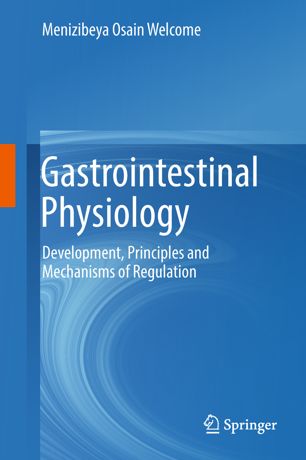فیزیولوژی دستگاه گوارش: تکامل، اصول و مکانیسم های تنظیم ۲۰۱۸
Gastrointestinal Physiology: Development, Principles and Mechanisms of Regulation 2018
دانلود کتاب فیزیولوژی دستگاه گوارش: تکامل، اصول و مکانیسم های تنظیم ۲۰۱۸ (Gastrointestinal Physiology: Development, Principles and Mechanisms of Regulation 2018) با لینک مستقیم و فرمت pdf (پی دی اف)
| نویسنده |
Menizibeya Osain Welcome |
|---|
| تعداد صفحهها |
1028 |
|---|---|
| نوع فایل |
|
| حجم |
29 Mb |
| سال انتشار |
2018 |
89,000 تومان
معرفی کتاب فیزیولوژی دستگاه گوارش: تکامل، اصول و مکانیسم های تنظیم ۲۰۱۸
این کتاب با ارائه یکی از جامع ترین بررسی ها درباره فیزیولوژی دستگاه گوارش (GI)، خوانندگان را در سفری به دستگاه گوارش کامل راهنمایی می کند و در عین حال اندام ها و سیستم های غددی مرتبط را نیز برجسته می کند. نه تنها فیزیولوژی سیستم اندام ها و رشته های مرتبط مانند آناتومی و بافت شناسی را بررسی می کند، بلکه فرآیندهای مولکولی و سلولی را نیز بررسی می کند که عملکرد دستگاه گوارش را حفظ می کند. به این ترتیب، این کتاب اطلاعات جامعی در مورد سطوح عملکرد مولکولی، سلولی، بافت، اندام و سیستم در دستگاه گوارش ارائه می دهد.
فصل هایی که به نقش روده به عنوان عضوی از غدد درون ریز، غدد درون ریز و سیستم عصبی و همچنین عملکرد میکروبیوم می پردازند، درک خوانندگان را از شبکه های چند اندامی در انسان بدن برای کمک به نشان دادن ارتباطات متقابل بین مفاهیم فیزیولوژیکی، اصول، و تظاهرات بالینی، نمونه های بالینی مانند بیماری هایی را که علوم پایه را به عمل بالینی مرتبط می کنند در بخش های ویژه «همبستگی های بالینی» شناسایی می کند. این کتاب با پوشش موضوعات سنتی و معاصر، منبع ارزشمندی برای دانشجویان زیست پزشکی، و همچنین متخصصان و دانشمندان مراقبت های بهداشتی است.
This book offers one of the most comprehensive reviews in the field of gastrointestinal (GI) physiology, guiding readers on a journey through the complete digestive tract, while also highlighting related organs and glandular systems. It is not solely limited to organ system physiology, and related disciplines like anatomy and histology, but also examines the molecular and cellular processes that keep the digestive system running. As such, the book provides extensive information on the molecular, cellular, tissue, organ, and system levels of functions in the GI system.
Chapters on the roles of the gut as an endocrine, exocrine and neural organ, as well as its microbiome functions, broaden readers’ understanding of the multi-organ networks in the human body. To help illustrate the interconnections between the physiological concepts, principles and clinical presentations, it outlines clinical examples such as pathologies that link basic science with clinical practice in special “clinical correlates” sections. Covering both traditional and contemporary topics, it is a valuable resource for biomedical students, as well as healthcare and scientific professionals.



